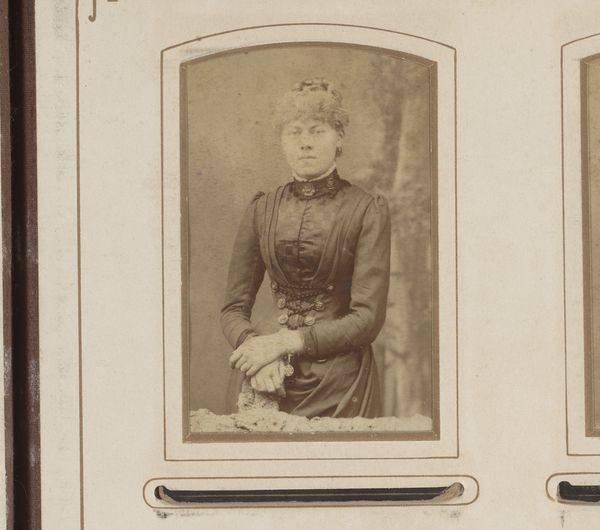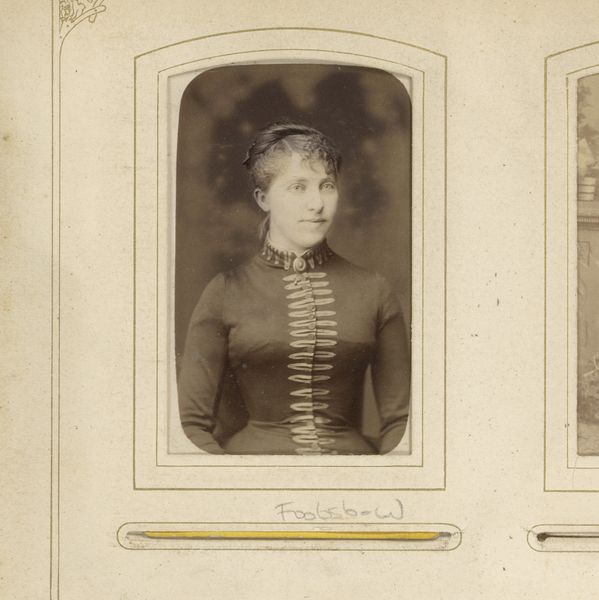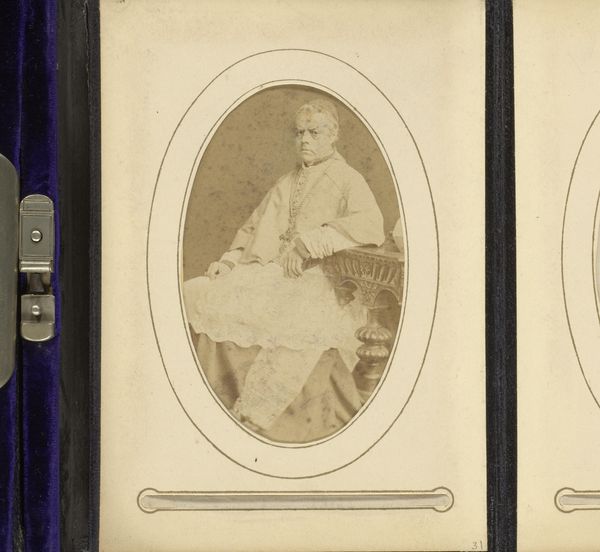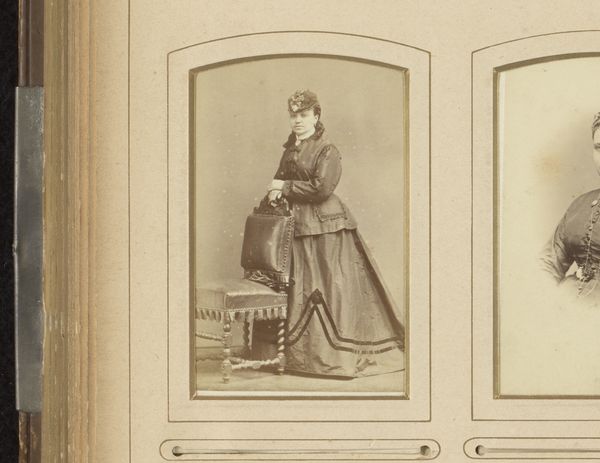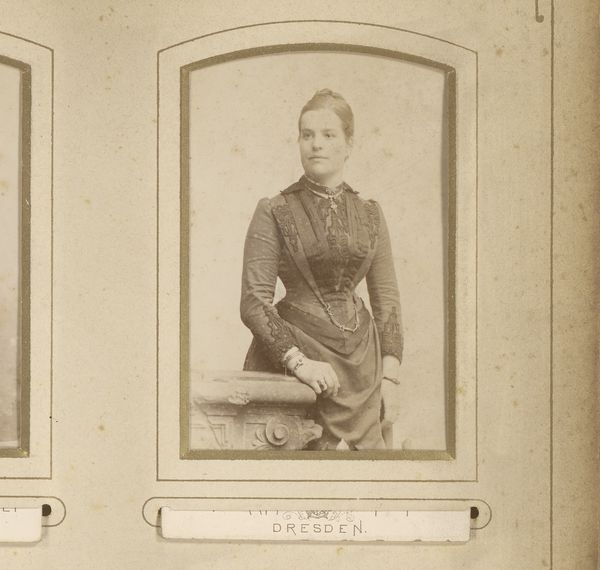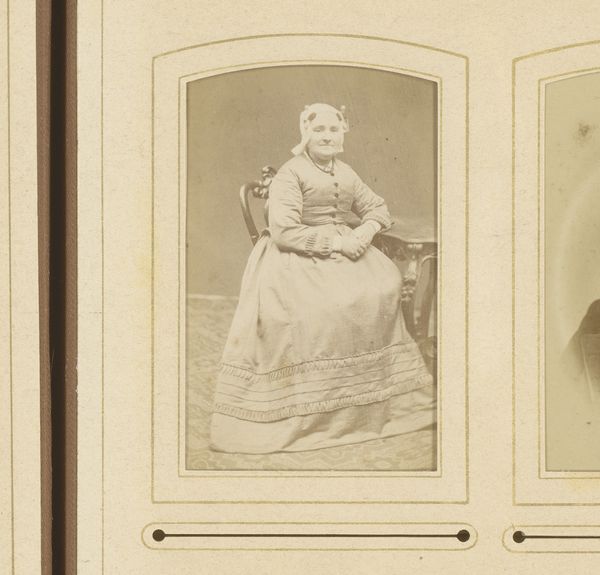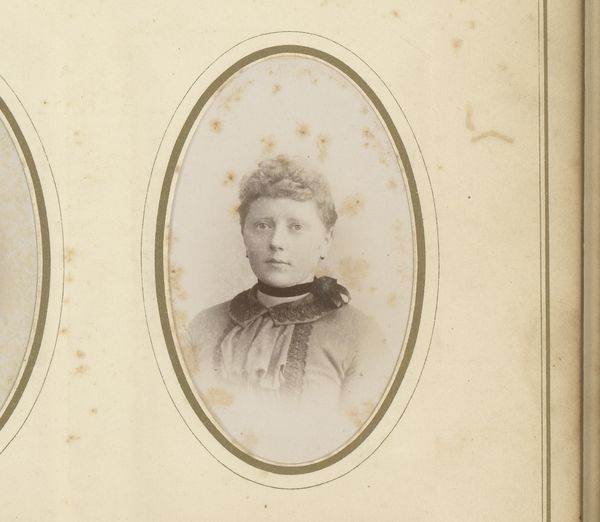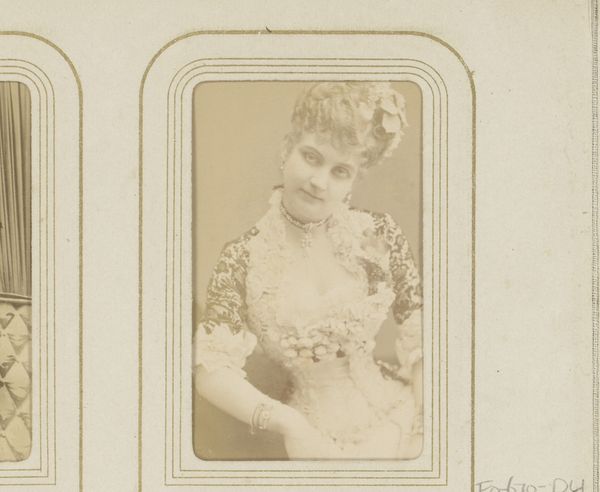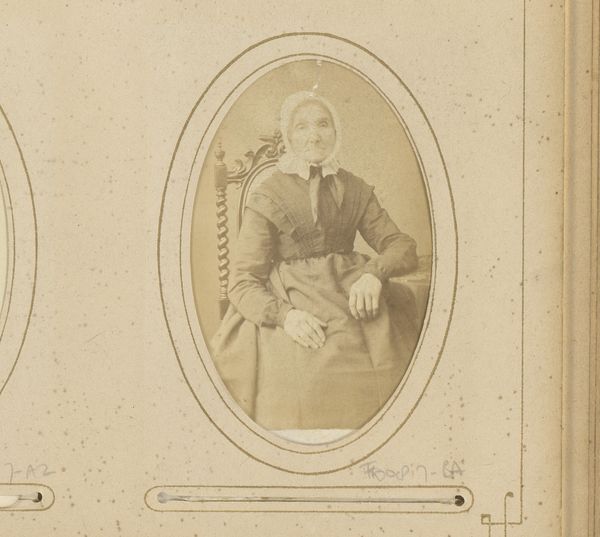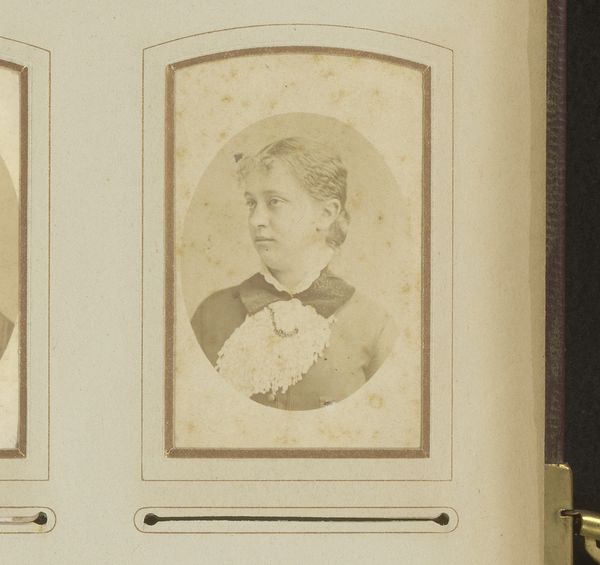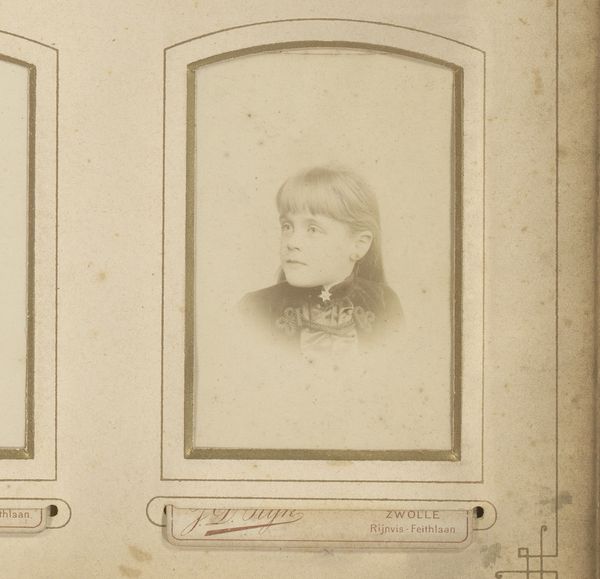
photography
#
portrait
#
photography
#
19th century
Dimensions: height 83 mm, width 52 mm
Copyright: Rijks Museum: Open Domain
Curator: Up next we have an intriguing portrait titled "Portret van een vrouw" which translates to "Portrait of a Woman." It's a photograph from somewhere between 1864 and 1886 taken by the Gebroeders Delboy and held here at the Rijksmuseum. Editor: My first thought is of the incredible material presence—look at the density of tones achieved, from the delicate creams to those rich, deep browns. It speaks to the craftsmanship and the sheer weight of the materials used. Curator: Absolutely, and it really highlights the sitter's position. The portrait embodies a very particular feminine ideal of the time, rigidly corseted with every hair perfectly in place, a pearl necklace clasped firmly at her throat and the dress buttons lined to match. What does this rigidity communicate in regards to women’s autonomy and position? Editor: Consider also how that tight corset literally molds and shapes the body; its creation demanded the exploitation of labor to yield a particular consumerist item that affected women physically and culturally. Curator: Precisely. The garment acts almost as a form of class performance. This isn’t simply an individual portrait. It exists within a web of power relations, signifying aspiration and perhaps even compliance within a very restrictive society for women of the era. How did photography democratize portraiture or did it? It’s impossible to disentangle art from social fabric! Editor: While, to your point, it did provide more access, consider the industrial scale this portrait hints at. From the photographer's studio as a place of work, to the chemistry involved in making the photograph, this image implicates more workers and processes than we immediately realize. And of course, there is the creation and supply of beads, dresses, pins. Each part contributes and relies on the others to make an item that displays social and economical status. Curator: That's insightful. Considering the photograph as part of a broader industry provides a totally different lens. It moves beyond a static image and transforms it into evidence of a larger network, a system of labor and consumption that reflects the society which gave it form. Editor: It reminds us that every item—every photograph—bears the marks of the labor and resources that made it possible, often revealing imbalances of power hidden in plain sight.
Comments
No comments
Be the first to comment and join the conversation on the ultimate creative platform.
